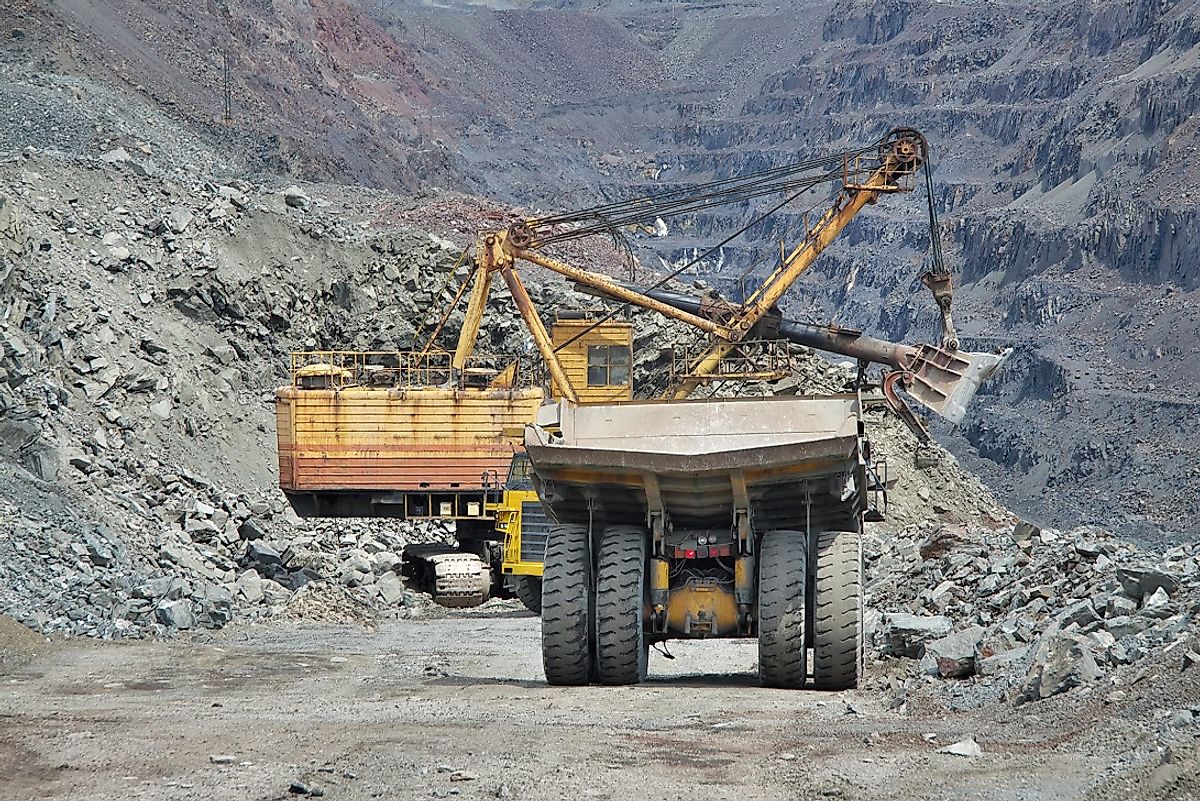What is Iron Ore?

5. Description
Iron ore refers to rocks or minerals from which metallic iron is extracted for commercial use. These minerals appear dark grey to rusty red in color, and are usually rich in iron oxides. Iron occurs in these ores in the form of such chemical compounds as hematite, magnetite, siderite, limonite, or geothite. Even though iron is the fourth most common element within the earth’s crust, most of it is bound in the form of silicate or carbonate compounds, from which it is extremely difficult to extract iron economically. Hence, iron present in the form of oxides in iron ore is commercially exploited for application across various industries. Initially, iron was extracted from hematite ores with a 70% iron content. However, extensive exploitation of this natural resource depleted the hematite ore and, since World War II, lower grade iron ores like magnetite or taconite have increasingly also been mined for iron extraction as well.
4. Location
Hematite, the most desirable iron ore because of its high iron content, is found throughout the world, with its highest abundance being seen in Australia, Brazil, and parts of Asia. Since the 1960’s, high-grade hematite ore has served as the major source of iron mined in Australia. It comprises 96% of the iron ore exports from that continent. The Hamersley range, in the state of Western Australia, is sitting on top of a banded iron formation which has the largest hematite reserves on the continent. The Carajas Mine in Brazil, meanwhile, is the largest known iron ore mine in the world, and is managed by the Vale Company. In Asia, China also has some major iron ore reserves, including the hematite ore deposits at Tung-Yeh-Chen and Dongye. Magnetite ores are mined in the U.S.A., especially in Michigan and Minnesota, while taconite reserves are found in eastern Canada, especially in the Labrador region.
3. Formation
About 1.8 billion years ago, when oxygen was non-existent on our planet, iron was present abundantly in a dissolved form within the Earth’s oceans. With the evolution of the first photosynthetic organisms, oxygen began to be released into the oceans, where it chemically combined with the dissolved oxygen to yield hematite or magnetite ores. The minerals thus produced became embedded in layers on the ocean’s floor in the form of ‘banded iron formations’. The term ‘band’ has been used to signify the alternating layers of silica or shale with those of iron ore. The seasonal changes in photosynthetic rates could be responsible for these banded deposits. Thusly, today iron ore deposits are found throughout the world as sedimentary rocks on the land, as well as under the ocean floor.
2. Uses
Iron ore is used to extract metallic iron which has a wide variety of applications in the industrial realm. Records of the use of iron as an important metal for making tools and other objects of utility by humans have been dated as long ago as 3000 years. However, during more recent times, the most important use of iron has been in the production of steel. Steel is known for its high durability, strength, and versatility. Even though pure iron is soft in nature, the addition of a small percentage of carbon (less than 1%) to the metal hardens it enough to ensure it a formidable level of strength and durability. Other elements like manganese, nickel, chromium and molybdenum might be added to iron in varying combinations and amounts to yield different alloys with specific properties as well. Steel finds its use in the construction industry, automobile industry, machine manufacturing industry, can and container manufacturing, appliance manufacturing, as well as in number of other important heavy industries. Iron chloride is used in sewage treatment systems, as well as in paints and textile colorants. Wrought iron is rust-resistant, and is therefore favored for use in creating household furniture and fences, while cast iron has traditionally been used to prepare kitchen utensils and cookware. Iron hydroxide is often employed in water purification systems, while iron sulfate is utilized in the treatment of iron deficiency anemias. Iron and niobium are combined to create an alloy that is used in manufacture of nuclear reactors. The manufacture of permanent magnets and electromagnets involves pure iron, while iron arsenate is used in producing insecticides and other posions.
1. Production
China, producing 1,500 million tons of iron ore in 2014, is the world’s largest producer of this mineral today. However, China is also the largest importer of iron in the world, since the Chinese have such a high level of demand and the iron ore produced within the country is of a significantly inferior quality. Vale, a Brazilian mining corporation, is the leading single company producing iron ore in the world, producing 320 million tons of this ore in 2014. The Rio Tinto, Fortescue Metals Group, Ltd., and BHP Billiton of Australia are also listed among some of world’s foremost iron ore mining companies. The price of iron ore increases with its demand, and there was a recent boom in its price due to the rapid economic developments in China. This necessitated a pronounced upswing in demand of high grade iron ore for extracting metallic iron, so that it could be utilized to meet that country's growing requirements in terms of improving infrastructure and maintaining high levels of industrial output..











